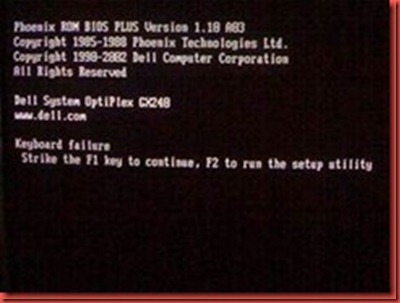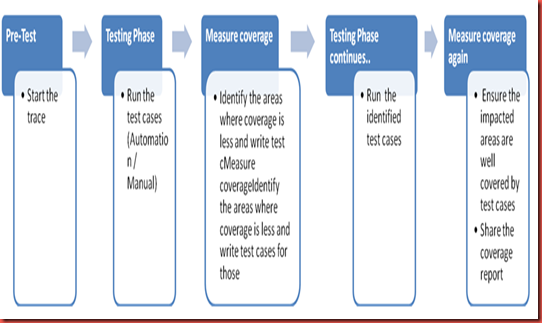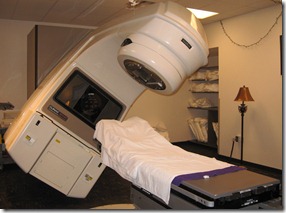I would be lying if I say I always wanted to do this and as far as i can remember, i was never known for participating in any extra-curricular activities, leave alone plays or stage acts. Lately it somewhere started to grow on me as I started watching (and appreciating) movies and more importantly when my sister (Savita , the cinematographer) instilled confidence in me. Thankfully i got my first break , when i was,asked ( let’s rather say forced ) to write and direct a play for Microsoft’s Tester’s Day. Like many others, i thought of Googling (oops …Binging) for it but i didn’t find one good play on software testing (good for me ) and i finally gathered the courage to write one. I am sharing the script with you all if you want to play it again :)
Plot:
A bunch of unusual testers unintentionally making the life of developers really terrible.
Actors:
<Testing Team>
Quality Advocate :: Ranchoddas
He is awesome force in testing that will stand for nothing else but quality. Ranchoddas is often called the quality police and are at times known to be too quality focused. He will enforce quality all over, from the build and release to the documentation. Even if no-one asked for his input. He will rip any spec to pieces; enforce quality in every meeting they attend and settle for nothing but the most ardent quality in every aspect of the software development life cycle.
One liner: He lives, breathes and sleeps quality.
Ranchoddas is respected and required on every project but he often over-looks commercial aspects meaning he can be known as troublesome, unbending and inflexible. He often has a reputation of sticking this his nose in or bullying. He also believes they are running the project.
Drama queen :: Sambhavna
Drama Queen over-reacts with each bug found. Whether it is a spelling mistake or a catastrophic failure The Drama Queen always reacts the same.
The Drama Queen can be seen hurtling towards the programming team, returning with at least 5 of them whilst wildly pointing at the screen and shouting 'Look, Look, it's broken'. In reality it's often 'just a bug' that is fixed immediately with little or no fuss. The Drama Queen really gets programmers backs up as they are never sure whether their code is really that bad or whether they've just overlooked something. Cry Wolf?
Socialiser :: Ritesh
One Liner: Let's get a drink and chat about it.
Laughing, chatting, enjoying their work and having fun. The Socialiser is often referred to as The Moral Officer due to his key role as team outing organizer and coffee break manager.
The socialiser basically knows everyone, everywhere
Last but not the least is our old Chaturlingam who has a knack of finding unusual bugs. He is most feared by developers. All he has to say in his defence is: “I don't go looking for defects. Defects find me. “
EXPLORER :: Chaturlingam
Chaturlingam who has a knack of finding unusual bugs. He is most feared by developers. All he has to say in his defense is: “I don't go looking for defects. Defects find me. “
He is what's known as a responsive thinker. He set himself a charter, often defined from a test case and they explore the app looking for interesting scenarios and paths reacting to information being given back by the app and in turn altering their test ideas. The defects he find are often show stoppers, are truly inventive and are often so difficult to fix that programmers have exploded in rage. The Explorer can test anything, in any state and at any time. They aren't bound by the constraints of a checklister.They are free. They explore.
<Development team>
ANGRY DEVELOPER:: Rakhi -
She is an aggressive and impatient person by nature. She of course doesn’t like being bugged too much by the test team. Though she doesn’t say it openly she disdains the test team for their lack of technical knowledge and for doing a job which she feels is not worth appreciating.
SEASONED DEVELOPER:: Anil
All my sympathies to Anil who is a senior campaigner who has got tired of arguing with test in his long career and decided to take an easier way out of not getting into confrontation mode. He tries to convince, fails miserably and in the end other party wins and he accepts it whether he was wrong or right.
Anil doesn’t like to go into confrontation modes with testers or for that matter with anyone. He is a composed person who is definitely not witty and he often finds himself giving up in the end by accepting the other’s terms. In short, people feel sympathy for him coz he really can’t fight back even when innocent
Opening Scene:
Developers are looking drowsy, sleepy and tired in the morning (as they were working till 6 in the morning). Testers are fresh and come late to start a new day.
< SCENE #1>: Installation
Chaturlingam to Sambhavna: (Chaturlingam looking excited to start the testing; Sambhavna looking tensed as she is installing and she’s looking anxious)
Hey Sambhavna, What’s taking the installation so long? Is it done yet?
Ranchoddas: (interrupts suddenly as if was just waiting for it)
Are you kidding? I am not going to anyone touch the build till my design inspection bugs are closed and I see the signed off Tech Design Spec doc. In the name of our Test Process Improvement, I can’t compromise on these key deliverables
<in high pitch to developer>
Ranchoddas: <Stands up and looking at Rakhi who is looking very lazy at the moment>
Why Bug tracker stills shows my design bugs are still active and Tech Spec is not updated? You have already wasted our 15 mins this morning
Rakhi: (trying her best to look reasonable)
Ranchoddas, Tech Design Specification is checked-in and complete. Check again.
Ranchoddas: (with sarcasm)
Yes, I can see the Tech Design Spec but that was for the last release and only thing you seem to have updated is the RELEASE VERSION NO. Don’t provoke me to reject the build.
Anil (waking up suddenly & trying to solve the matter; trying to get sympathy):
Guys…We just finished coding only this morning at 6 a.m. so we would have missed it. You start with the installation and give us time till EOD and we will update the tech spec
Ranchoddas: (looking surprised; no pity that devs were working till morning)
Are you suggesting me that you have not done Unit Testing in that case? I want to see Unit Test report now? Mister quality is not only our responsibility.
Rakhi (feeling trapped):
There was a requirement change yesterday night and because of that we didn’t get enough time to code and unit test.
Ranchoddas: (Giving an expression as if he is back stabbed):
OMG!!! So there was a CR nobody bothered to inform the test team why the test team was not in the loop? What is wrong with our PM? What about the impact analysis.? And when will we update our test cases? I need to escalate this right away to senior management. Nobody breaks law in my territory.
Ritesh: cool man. That’s ok. The CR is in my work item & I have updated it in my test case. I think we should start off with our testing
Anil (looking relaxed again. Passes a broad smile to Ritesh)
Ranchoddas, I am resolving your tech spec comments. It won’t happen again.
Ranchoddas (shrugs his shoulders)
Fine.
< PAUSE OF few second. Team is doing their usual stuff>
Drama Queen: <doing the installation; she squeals and runs toward developers>
The build failed. Oh God why today? Deadline is so close. It always happens to me. I don’t know what we are going to do next.
Anil (Looking relaxed after seeing the error and speaks in a soft tone of contempt for testers):
Yes Sambhavna, It will fail coz you don’t have D drive on your machine
Drama Queen:
Mister don’t get technical with me. How on the earth was i supposed to know that?
<Rakhi gives a disgusting look to Sambhavna. Test team looks embarrassed;. Sambhavna doesn’t know what was wrong with that. Anil has no words and everyone gets back to work>
< PAUSE OF 10 second. Team is doing their usual stuff. Devs have gone back to their seats>
Sambhavna: Not again !!!! There is another problem. After I install the build, dialog box says “Installation recommends reboot. Do you want to reboot now?”
Rakhi (casually) What is the problem. Say NO !!!!
Sambhavna: (Looking irritated)
There is only one button available and that says. “YES”
Rakhi : oops…looks like a minor miss
Rakhi gives a smirk, and Sambhavna is puzzled.
<ANNOUNCEMENT: so finally the installation succeeded. There were few bugs here and there but the team is still managing quite okay>
< PAUSE OF 10 second. Team is doing their usual stuff. >
< SCENE #2>: (BVT & Functional Testing)
Ranchoddas:
I can see two bugs where “how found” and “found in environment” is not entered. Can you fix it right away? I am not going to tolerate such process compliance, I tell you!
Ritesh:
Sorry!!!. That has to be me. Leave it to me dude, I will take care of it.
< PAUSE OF 10 second. Team is doing their usual stuff. >
Ritesh:
Guys, as you know our last release had just 5 Severity 1 bugs production, our management is really happy with our performance and has given us budget for an outing. How about a lunch today.?
Ranchoddas:
Did we scope for this time out in our schedule? Are you sure we will not be missing out on our time to test by such outings? I suggest we take an informed decision on this. Send an email with voting option, so that we have this documented somewhere for future reference.
Ritesh:
Ok boss. Whatever u say. Let’s do it fast. I have to check the reservation then.
Rakhi:
Lets go to KFC. Finger licking good.
Anil:
Today is Tuesday. Can we go to a Veg restaurant
Ritesh:
Hmm.. How about Little Italy, Mozarella, Ohris or Malgudi ?
Ranchoddas:
Ohris? All the way to Banjara Hills? *sarcastically*
Do you want this to be a full day activity????
Sambhavna:
How can you even think about it? I am not confident about the code quality and there is so much to test. Too little time and too much to test such a crappy code!
Anil:
Hello madam? How can you call my code a crappy code? Do you even have an idea about the amount of design and planning that has gone into it? For starters, Each module is designed in way that it can be reused!!!
Sambhavna:
Hello Mister! Let your code be usable first. We can think about reusing it later!
Ritesh:
<<Consoling Anil …>> Chill out dude .. it is not as crappy …<<little pause>> as it was last time .. !!! (Glancing the test team members)
Chaturlingam:
I agree with our drama queen for once....lunch can wait...there are too many bugs.. I need to call for an immediate triage? We can wind that up and then go for lunch.
TEST TEAM IN CHORUS: Then it will DINNER !!!!
<ANNOUNCEMENT : Triage meeting is called out>
< SCENE #3>-- (THE TRIAGE)
Chaturlingam:
To start with let’s looks at Defect ID #3601, I get a system error when I give an invalid file (negative testing)
Anil:
Man..…go and see the error report first to see the root cause
Chaturlingam:
Really? This is what the error is!
Anil: (Looks embarrassed)
Err… I will take care of it.
Sambhavna:
Look, look, it’s not working. I swear, I saw it coming. I knew it would break. Thanks god i found it in test otherwise i don’t know what would have happened in production. How could you guys miss it?
Rakhi:
What’s the issue?
Ranchoddas:
Don’t show them. First log it in the tool. That’s the process.
Rakhi # (Gives up and walks to drama queen’s cabin):
Can I have a look at it?
Ranchoddas:
Don’t you dare fixing the code on her machine?
Rakhi:
Dude. I cannot change the code through an exe. Remember?
Ranchoddas:
Of course I know that! But I cannot trust you guys at all!
Sambhavna (finally explains);
See the spelling of “ORGANISE” . it has to be “ORGANIZE”.
Rakhi (Almost cursing herself):
What’s the big deal? I thought we have customer in UK as well.
Sambhavna:
For your information, 51 % of the customers are in US and hence it has to be US English
Rakhi:
Plz go log a bug
Sambhavna:
S1 / P1 ?
Rakhi (seeing her patience tested):
S3/P3
Sambhavna:
How is it S3? Can you not see this is such a severe bug?
Shijavi (takes out a doc which he keeps ready all the time)
Wait a minute. I have a reference, exactly for such situations. Microsoft’s Severity /Priority guidelines
<Anil & Rakhi are surprised that he carries such a thing all the time>
Ranchoddas:
As per Slide 4, line 2, this bug is S2/P2 to say the least
Anil (seeing they are losing the ground)
Agreed.
Ritesh: (to developer):
Boss …, looks like there is indeed some problem, but not big enough
Anil (looking tensed):
What happened?
Ritesh:
Look at this dialog box. Is it not silly ?
….. <<getting a call in between …>> … <<resume after little pause>>
I will log a S2-P3 bug, I’m sure you can fix it!
Ranchoddas:
Can’t you take personal call later ?
Ritesh:
Oh..dude, we can manage this triage meeting. Managing home triage is more difficult...!!
Ranchoddas:
Okay … I wanted to ask, how is it a S2-P3 man? Can you not see that it’s a Fatal error? Has to be a S1!
Ritesh:
Oh common, its sure is not a show-stopper! No panic dude !..<<little pause>> Btw …., I have one more.
Look at this screen, it’s throwing error that “Keyboard failure” but asking me to press F1 to continue …. No big deal. Your code is not crappy dude, I think, I should change the keyboard & try this scenario
Ranchoddas:
Dude, what is a Sev 1 bug in your dictionary!!
Chaturlingam:<Mighty pleased with himself>
Okay. I now have an awesome bug. Something which stands up to my reputation and will give you guys sleepless nights
<Rakhi & Anil make a face and wait for Chaturlingam to continue>
I put up a 30GB file for copy from the Source to Destination folder, and then I put some load on the system as it is copying. I then tried to remove the network cable and see what happens, and viola, I have the bug! See this! Do you expect my grandkids to come and test this?
And this ? What were you doing when you created this dialog box in your code?
Rakhi & Anil: <Look at each other and say at the same time>
Oh come on, man! Who on earth would even think of doing something as foolish as this!!!
Rakhi:
Did you log this bug? I am going to close this as Not-Repro!
Anil:
Its okay Rakhi. Lets fix it! Lets ensure that a graceful error is thrown when someone this foolish does something this weird on the application!
Sambhavna:
Okay, now my bug! This one took off my confidence on the code totally! What on earth am I supposed to do?
Rakhi:<smirks>
Press ‘Proceed’ and see na. I ensure it would format your system!
Sambhavna:
I have logged this bug. Fix it! What if a customer gets this bug? Imagine what would happen to our reputation if we ship this?
Rakhi:
Oh well, no customer will get this bug! I ensure that this happens only on your machine! This block of code would get executed only for yours and Ranchoddas’s login! But now that you proved to be smart enough to find it, I will fix it!
Sambhavna:
See this one! I told it I don’t want those drivers on my machine! God knows what you guys have coded into the drivers!
Anil:
Uncalled for but I accept this one!
Ranchoddas:
If all these weren’t enough, I have one now. And because of this one, I reject the build. Please give a new build!
Rakhi & Anil: <Too stumped to say anything>
Rakhi:
That’s it! Enough is enough. I am going to set up a 1:1 with my manager. Cannot work with these loonies anymore!
Ranchoddas:
Can someone send minutes of this meeting ?
Chaturlingam:
Boss … you are the quality “Guru” .. you can take care of sending minutes.
Ritesh:
Hey guys … itz been long battle today, let’s chill out. It seems some tester’s day is going on and looks like they are providing free lunch J lets go.
Narrator:
Thus ended yet another eventful day in the lives of these team members.
In spite of all the weird bugs, the stringent processes, the long coffee breaks and the amazing histrionics, this software was shipped and was reported to have touched a user base of 1M customers!
Anil is now a Dev lead, and it is heard that he has extra long sessions with his shrink, all for his sanity
Rakhi has moved away from the team, into a totally different discipline!
All the test team members are still flourishing in the same team, and continuing to give sleepless nights to their Devs!
PS: By the way, did i tell you that this play was quite a success at the event? Feel free to use it -- Raj, Microsoft, India , raj.kamal13@gmail.com

![clip_image002[4] clip_image002[4]](http://lh3.ggpht.com/_IWEJ_QTVH1c/TE3TzKXN3VI/AAAAAAAAGQ4/5XVRgFZ3tD0/clip_image002%5B4%5D%5B3%5D.jpg?imgmax=800)

![clip_image004[4] clip_image004[4]](http://lh4.ggpht.com/_IWEJ_QTVH1c/TE3T2X4FbKI/AAAAAAAAGRI/vwWx0ZGcdpQ/clip_image004%5B4%5D%5B3%5D.jpg?imgmax=800)

![clip_image006[4] clip_image006[4]](http://lh3.ggpht.com/_IWEJ_QTVH1c/TE3T59qm4SI/AAAAAAAAGRY/-hnRIchC-DU/clip_image006%5B4%5D%5B3%5D.jpg?imgmax=800)

![clip_image008[4] clip_image008[4]](http://lh4.ggpht.com/_IWEJ_QTVH1c/TE3T855fQtI/AAAAAAAAGRo/C-hgHEBkSGc/clip_image008%5B4%5D%5B3%5D.jpg?imgmax=800)


